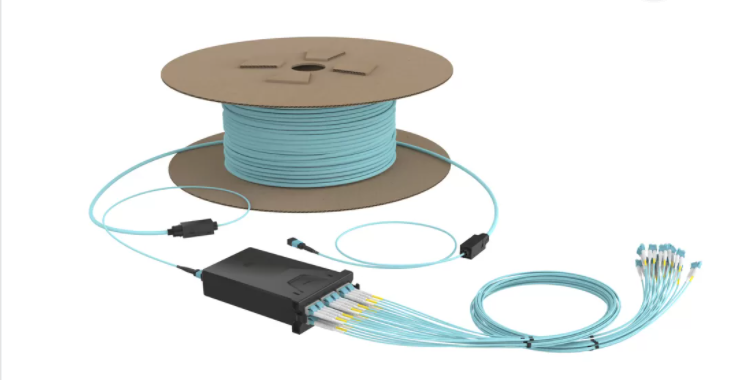Oufu Optical Fiber Cable Co.,Ltd
Address: Shenyang, Liaoning, China
Contact person: Manager Zhang
Phone: 400-964-1314
Mobile phone: +86 13904053308
【whatsapp && wechat】
2024-07-22 1680
MPO, short for Multi-fiber Push On, is a type of high-performance fiber connector designed to facilitate simultaneous connections of multiple fibers within a single connector. Developed by Japan's NTT, MPO connectors have become the standard for high-density fiber optic cabling systems due to their exceptional capabilities in increasing fiber link density and bandwidth.

One of the primary differentiators among MPO fiber cables lies in their core counts. The most common core configurations include 8-core and 12-core MPO cables, each offering unique advantages tailored to specific network requirements.
8-core MPO fiber cables are widely used in networks supporting 40G and 100G data transmission rates. They offer several key advantages:
Compatibility with Fiber Transceivers: 8-core MPO cables are the optimal choice for systems utilizing eight-fiber transceivers, ensuring 100% fiber utilization without additional costs or insertion losses.
Routing Flexibility: 8-core branch cables can easily be routed to common line card ports with port counts divisible by four (e.g., 16, 32 ports), making them highly versatile in various network topologies.
Cost-Effectiveness: In scenarios where eight-fiber transceivers are prevalent, 8-core MPO cables provide a cost-effective solution, minimizing the need for conversion devices or additional hardware.
While 12-core MPO cables offer increased fiber density, their advantages are more nuanced:
High-Density Connectivity: 12-core cables enable faster installation of a large number of fibers, making them ideal for data centers requiring ultra-high-density fiber infrastructure.
Future-Proofing: As network speeds and capacities continue to increase, 12-core MPO cables provide a scalable solution, anticipating the need for more bandwidth in the future.
www.adsscable.cn
Challenges in Routing: However, 12-core cables may present challenges in routing to certain line card ports, particularly those with port counts not divisible by six.
In addition to core counts, the choice of interface types is also crucial in MPO fiber cable performance. Common interface types include MPO/PC (Physical Contact) and MPO/APC (Angled Physical Contact), each with distinct characteristics:
MPO/PC: Offers flat end faces, ensuring low insertion loss and high return loss performance. Suitable for most standard network applications.
MPO/APC: Features angled end faces, minimizing back reflections and improving overall signal integrity. Ideal for applications requiring ultra-low loss and high signal purity, such as long-haul fiber networks.
When evaluating MPO fiber cables, it's essential to consider the transmission performance across various network speeds and distances. For instance, OM3 and OM4 fiber cables differ significantly in their transmission capabilities:
OM3: Optimized for 850nm VCSELs, OM3 cables support up to 10Gb/s Ethernet over distances of up to 300 meters.
OM4: An upgrade to OM3, OM4 cables extend the transmission distance to 550 meters at 10Gb/s, making them ideal for longer-haul applications or networks requiring higher bandwidths.
MPO fiber cables, with their varying core counts and interface types, offer a versatile range of solutions tailored to meet the diverse needs of modern communication networks. From the cost-effectiveness of 8-core cables to the scalability of 12-core cables, the choice depends on specific network requirements and future expansion plans. Understanding the differences in performance and compatibility among different MPO fiber cable configurations is crucial for SEO engineers and network administrators seeking to optimize their network infrastructures for maximum efficiency and reliability. As technology advances, MPO fiber cables will continue to evolve, pushing the boundaries of high-speed, high-density fiber optic networking.
www.adsscable.cn